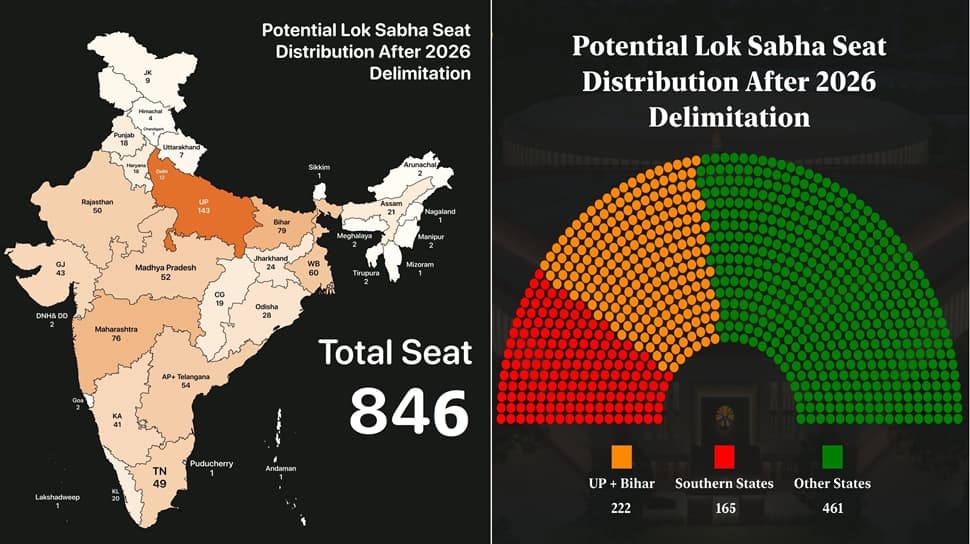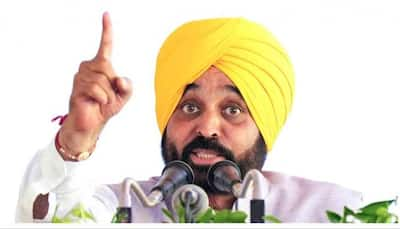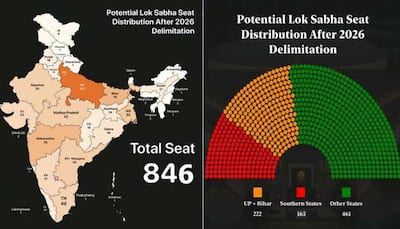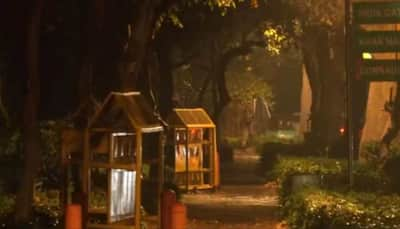Delimitation Row: India’s electoral landscape is set for a major shift next year with the implementation of the women’s reservation bill. The government has confirmed that the 33% reservation for women in the Lok Sabha will take effect after the delimitation process in 2026. As per existing law, the next delimitation exercise may be conducted after the first census to be taken after the year 2026.
However, even before delimitation begins, concerns have emerged, particularly from southern states, which fear a reduction in their Lok Sabha seats if the process is based on population. In contrast, northern states like Uttar Pradesh and Bihar, with higher populations, are expected to gain seats. Meanwhile, the Central government has assured that the allocation of seats will be handled fairly and the Lok Sabha seats of none of the states in the South will decrease, said Union Home Minister Amit Shah.
Delimitation isn’t just about Tamil Nadu—it affects all of South India. A democratic process should not penalise states that have successfully managed population growth, led in development, and made significant contributions to national progress. We need a fair, transparent, and… — M.K.Stalin (@mkstalin)
Reacting to Stalin’s remark, Tamil Nadu unit BJP President K Annamalai slammed the Chief Minister, accusing him of speaking ‘lies’ one after another. Annamalai assured that the NDA government will do justice to all states.
The number of Lok Sabha seats has remained unchanged since 1977. However, with the upcoming census and delimitation process before the implementation of the women’s reservation bill, the total seats are expected to increase significantly from 543 to 753. Uttar Pradesh, which already holds the highest number of parliamentary seats, is set to see the biggest increase.
Projections indicate that Karnataka’s Lok Sabha seats will rise from 28 to 36, an increase of eight. Telangana’s representation will grow from 17 to 20, Andhra Pradesh from 25 to 28, and Tamil Nadu from 39 to 41. Kerala, which has effectively managed population growth, is likely to see its seats reduced from 20 to 19.
In contrast, Uttar Pradesh is expected to see a sharp rise from 80 to 128 seats. Bihar, another state with high population growth, will see an increase from 40 to 70 seats. Madhya Pradesh’s representation is projected to expand from 29 to 47 seats, while Maharashtra’s count may rise from 48 to 68. Similarly, Rajasthan’s Lok Sabha seats are expected to increase from 25 to 44.
However, according to a 2019 report by the Carnegie Endowment for International Peace, if delimitation is done based on population considering that no state is to lose representation, the Lok Sabha would have to consist of 846 representatives, exceeding the maximum strength of any lower house or unicameral body in a democratic country today.
Existing Seats
Uttar Pradesh
143
80
Bihar
79
40
Maharashtra
76
48
West Bengal
60
42
Andhra Pradesh + Telangana
54
42
Madhya Pradesh
52
29
Rajasthan
50
25
Tamil Nadu
49
39
Gujarat
43
26
Karnataka
41
28
Odisha
28
21
Chhattisgarh
19
11
Jharkhand
24
14
Assam
21
14
Kerala
20
20
Punjab
18
13
Haryana
18
10
Delhi
12
7
Jammu & Kashmir
9
6
Uttarakhand
7
5
Himachal Pradesh
4
4
Goa
2
2
Tripura
2
2
Manipur
2
2
Meghalaya
2
2
Arunachal Pradesh
2
2
Mizoram
1
1
Nagaland
1
1
Sikkim
1
1
Chandigarh
1
1
Andaman & Nicobar Islands
1
1
Puducherry
1
1
Lakshadweep
1
1
Daman & Diu
1
1
Dadra & Nagar Haveli
1
1
If the Lok Sabha gets 846 seats, then the majority mark would be 424. On the other hand, the northern states like Uttar Pradesh, Bihar, Jharkhand, Rajasthan, Delhi, Madhya Pradesh and Haryana would have a total of 378 seats and if states like Maharashtra and Odisha are added, it would jump to 482, way above the majority mark. The southern states like Andhra, Telangana, Karnataka, Kerala, Puducherry and Tamil Nadu will have 165 seats together.

The delimitation of Parliamentary and Assembly constituencies was done according to the procedure laid down in the Delimitation Act, 2002. The Election Commission of India (ECI) has informed that in accordance with the provisions of the Delimitation Act, 2002 (33 of 2002), the Delimitation Commission received assistance in redrawing boundaries from State Election Commissioners, Chief Electoral Officers and Associate Members from the States concerned as well as with the Registrar General & Census Commissioner of India and simultaneously suggestions were also taken from stakeholders.
The State Governments have no role in redesigning the borders of constituencies. The seats for Scheduled Castes and Scheduled Tribes were reserved as per the Constitutional and Legal provisions i.e. articles 330 and 332 of the Constitution of India read with sections 9(1)(c) and 9(1)(d) of the Delimitation Act, 2002.
As informed by the ECI, under the provisions of the Delimitation Act, 2002, the then Delimitation Commission had conducted public sittings in all concerned States/Union territories to hear the suggestions/ objections received from the public/political parties/organisations or otherwise w.r.t. its draft proposals published in the Central and State Gazettes. Further, after consideration of all suggestions/objections as received w.r.t. draft proposals or in the public sittings, the Delimitation Commission published its final orders in the Central and State Gazettes for public information.
Stay informed on all the , real-time updates, and follow all the important headlines in and on Zee News.





![Urvashi Rautela’s BOLD claim about Sanam Re cast left Yami Gautam, Pulkit Samrat…; netizens react, ‘Ye pehle se hi cracked…’ [Watch]](https://eflip.in/wp-content/uploads/2025/02/urvashi-1-800x450.jpg)


